Classification
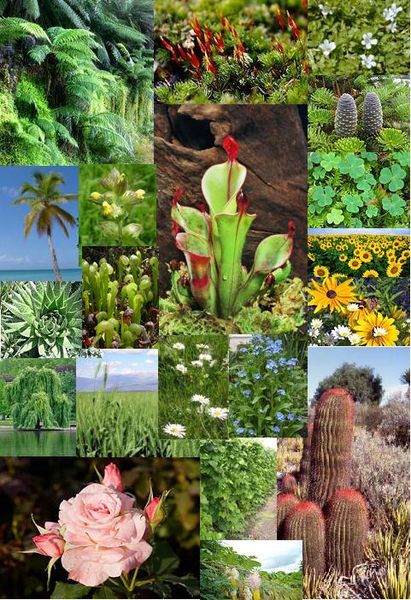 Kingdom-
Plantae
Kingdom-
Plantae
In order to be considered a part of this group an organism needs
to have undergone a secondary endosymbiosis of a chloroplast,
or, in other words, it has to have engulfed a specialized
bacteria that is able to perform photosynthesis. This is
important because photosynthesis is the general mechanism that
makes the large amount of the usable energy that organisms here
on Earth rely on to survive! As a result of having this
chloroplast, the plants are able to make their own food
(chemical energy) from light energy. To learn more about
photosynthesis and how it works click
here. The first endosymbiosis was one shared by many
different organisms (including us!), and that is where the cell
engulfed a different bacteria that has now evolved into the
organelle we call the mitochondria. The mitochondria is like the
battery of the cell, and its function is to break down the
chemical food that was made through photosynthesis. This is
important because now the food is able to be converted into
actual energy the plant can use to grow! So this means that
plants have both the ability to make their own food from light
and convert their food into usable energy.
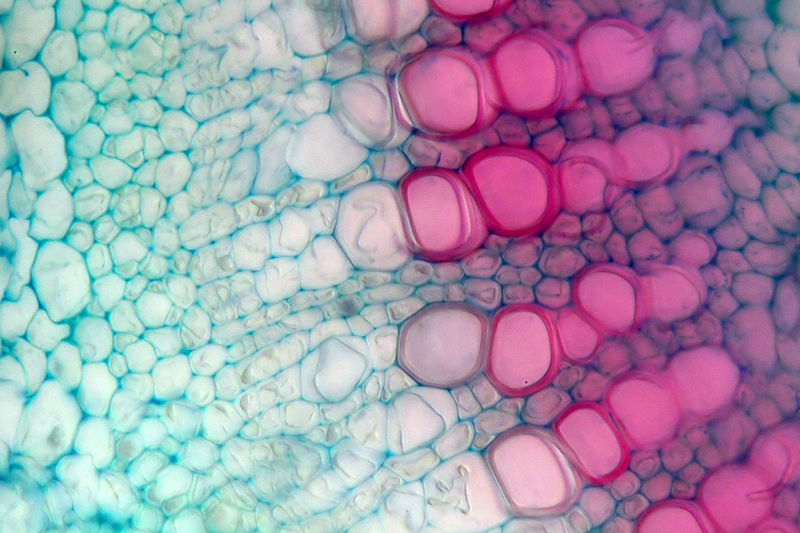 Subkingdom- Tracheobionta
Subkingdom- Tracheobionta
This group of plants is known as the vascular plants. This means
that they have developed a specific vascular system (like a
bunch of reinforced tubes) to help transport nutrients and water
throughout the plant. The special tubes are called xylem and
phloem, where xylem is used to transport the water and phloem is
used to transport the nutrients and sugars! To here more about
xylem and phloem and what their function is in Aconitum
napellus click here!
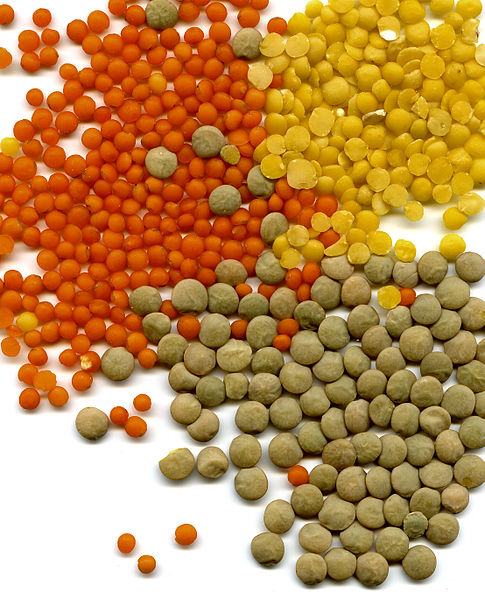 Super
Division- Spermatophyta
Super
Division- Spermatophyta
This group of plants is more commonly called the seed plants.
This means that the plants have gone from
having spores as their primary form of dispersal to having
seeds! These seeds are especially important in that they have
protection for the plant embryo that was not available to it
before. They have a special seed coat made of a protein called
lignin that offers extra protection to the ovule. There is also
a special tissue called endosperm inside the seed which is full
of nutrients and helps provide the energy for the plant embryo
as it first starts to grow. This small amount of stored food
leaves the the plant embryo with just enough energy to divide
and make its own set of roots and leaves so that it can begin
photosynthesizing and making its own food.
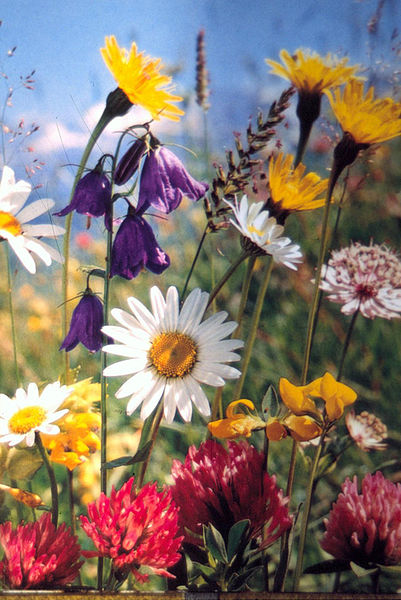 Division-
Magnoliophyta/Angiophyta
Division-
Magnoliophyta/Angiophyta
These are the flowering plants. These plants are special in that
they make flowers as part of their reproductive process! These
often help to attract special pollinators which in turn help to
spread out the pollen of the flower to different areas, aiding
in reproduction and the spreading out of genes. Also, these
flowers are what give rise to the different delicious fruits we
eat. These fruits are actually a special adaptation by the plant
to help them get their seeds more widely dispersed. The fruit
actually is an adapted form of the plant's ovary. Plants make
the fruit surrounding the seeds, so that when other animals come
to eat the fruit they are inadvertantly eating the seeds too!
Then once the fruit material has passed through and been
digested by the animal the seeds eventually come out in its
feces, usually in a different spot than where they started. This
is a perfect adaptation to help combat the problem of plants
being mainly stationary, and it helps to spread the seeds over
relatively wide areas. This also is helpful in that the feces
works as perfect fertilizer for the new growing plant to get
some starting nutrients from!
 Class-
Magnoliopsida
Class-
Magnoliopsida
This class of plants is more often called the Dicotyledons (Dicots)
or the Eudicots. This place represents the separation of the
Eudicots from the Monocots, and each of the two groups have very
distinctive morphological differences that make identification
easy. To the left is a diagram I made briefly summarizing the
differences between the two based on an image I found on another
informational website. To see the original diagram
click here.
Subclass- Magnoliidae
Flowers in this class generally have simple pistils (the female
part of the flower), and there are often many spiraled perianth
parts. The flower stamens are both free and numerous, and pollen
structure is usually relatively primative.
Order-
Ranunculales
These plants undergo successive microsporogenesis, have
irregular stamen arrangement in their flowers, have more than 2 ovules/carpel
in,
have similar rbcl, atpB, and 185 r DNA data, and also have a
micropyle that is formed from both integuments.
Family- Rununculaceae
In this family the organisms have parianths and stamens in
numbers of 3. Similar structures are found opposite each other
in the flower, and the nuclear endosperm outer perianth members
have 3 or more vascular traces. They also have a non-tuberous
rhizome, and an outer integument 4 or more cells thick.

Genus- Aconitum
This grouping is based off of similarities in morphology between
the organisms along with similarities in the toxic chemicals
produced by the plants. To learn more about the chemicals
produced in Aconitum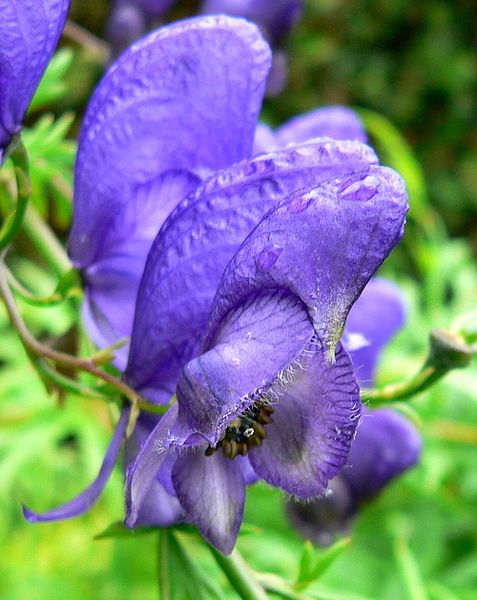 and their effects click here.
and their effects click here.
Species- Aconitum napellus
This species of Aconitum is the main focus of this
website, and it can be differentiated based largely upon its
habitat along with flower color and other morphological
differences. If you want to learn more about Aconitum
napellus then you have come to the right place!
Phylogenetic Trees
Here is a different way to look at the classification of this
species.
Below I have made two phylogenetic trees that help to show the
relationships Aconitum napellus has with many other
groups of organisms.
The first tree is the ordering of the relationships of
different plants very closely related to Aconitum napellus.
This tree is an adapted version from a tree determined through a
study by Ms. Wei Wang and associates. The tree was determined based
on a combination of morphological and molecular data. The main parts
of the genome analyzed for classification were plasted rbcL, matK,
trnL-F, and nuclear ribosomal RNA. To go to this study directly to
read more
click here. The red labeled parts of the tree
represent the groups A. napellus is directly a part of.
To see the tree more zoomed in click on it!

The second tree is more of a broad view of the relationships between
all plant types and even gives reference to the relations shared
with different types of algae. This tree is made based on
synapomorphic traits such as vascularity vs. non-vascularity and
monocot vs. dicot. For a bigger view click on the image! Also, to
see each image used for the collage individually, click on the
letters above them.
a
b
c
d
e
f
g
h
i
j
k
l
m
n
o
p

To return to the homepage click here!
